Matador Network's Blog, page 821
July 13, 2020
International student ban lawsuit
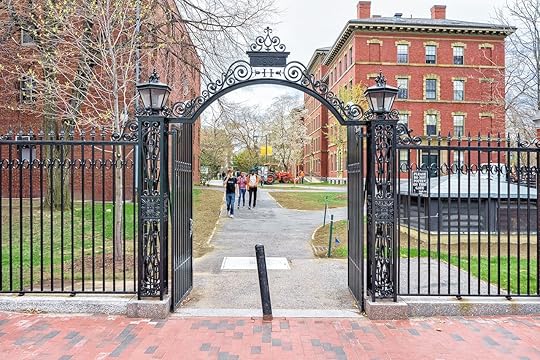
After the Trump administration passed a new directive threatening to expel international students from the country if their universities don’t offer in-person classes, tech firms, businesses, and universities are banning together to fight the measure. Harvard and MIT have already sued the administration over the new policy, and now they’re being joined by Facebook, the US Chamber of Commerce, and a dozen other tech firms and business advocacy groups.
An amicus brief was filed Monday with the US District Court of Massachusetts, supported by Google, Twitter, Spotify, and others, arguing that the government’s directive violates decades of federal law meant to protect businesses from arbitrary decisions that could negatively impact businesses.
According to the brief filed by Facebook, “The Administrative Procedure Act [APA] required defendants … to consider the serious consequences for the US business community and the entire economy that would result from a directive requiring more than half of all international students to leave the country, and also to take account of the substantial reliance interests of US companies that would be disrupted by such a decision.”
Massachusetts Attorney General Maura Healey, who opposes the measure, wrote in a separate amicus brief on behalf of a coalition of 17 states and Washington DC. It says, “The Trump administration didn’t even attempt to explain the basis for this senseless rule, which forces schools to choose between keeping their international students enrolled and protecting the health and safety of their campuses.”
Between major universities, tech companies, and other businesses, it’s pretty clear that a broad range of industries is negatively affected by this decision and oppose it both on economic and moral grounds. Expect more companies and institutions to join the fight as time goes on. 
More like thisCultureBy rejecting international students, will Trump ruin US universities?
The post Facebook, Google, and more join Harvard in suing Trump administration for international student ban appeared first on Matador Network.

Decolonizing Indigenous cuisine
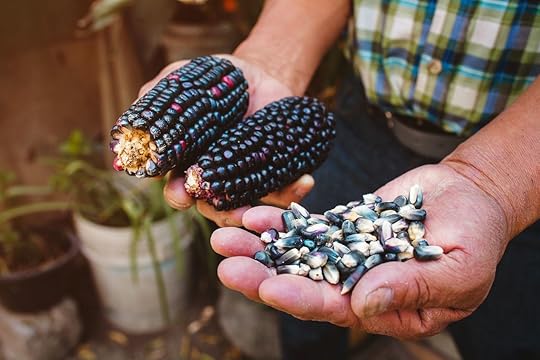
In 2016, chef Brian Yazzie and his wife drove to the Standing Rock Indian Reservation in North Dakota. Earlier that year, a grassroots movement centered on the sovereignty of Indingeous people had emerged to protest the Dakota Access Pipeline. The protestors set up a camp in Standing Rock that at one point housed thousands of people, drawn to the site not just to plan the resistance movement but to celebrate and preserve Indiengous culture.
And they needed to eat. That’s where Yazzie came in.
“My front line was in the kitchen,” Yazzie tells me. Yazzie is Navajo, or Diné, the tribe’s preferred name, which means “the people” in their language. He’s the founder of Intertribal Foodways, a mobile catering company. “With a couple of volunteers, [we] were cooking three meals a day for over 2,500 people.”
Yazzi will never forget what he saw when he opened the pantry on his first day of orientation at the protests.
“I realized how that ancestral memory and trauma manifests,” he recalls. “There were rows of flour on the left side, and the right side, rows of lard cans and crisco. Just nothing but commodity food. Canned vegetables from the ‘60s or the ‘80s that people had donated. A memory came to me of looking through my ancestors, thinking this was what we had to cook with for survival.”
Yazzie immediately took to his social media channels, calling on people to donate wild game and fresh produce. The chef, who is now based in Minneapolis, has spent most of his professional career rebuilding the very concept of Indigenous cuisine. That means eschewing what he calls “survival staples” — flour, sugar, salt, and lard — ingredients introduced to Indigeous tribes by white settlers.
Survival staples have a complicated history. In the encyclopedia of Indigenous food, perhaps one of the most recognizable dishes is fry bread. Many Diné people grow up eating it at home, where their mothers and grandmothers prepared it for them. It carries resonances of home, family, and nostalgia, but its origins are rooted in strife: Fry bread is the product of The Long Walk, the forced relocation of the Diné people from Arizona to New Mexico in 1864.
The 18-day, 300-mile journey claimed the lives of 200 Diné people. The remaining 9,000 people were confined to a 40-square mile plot of land that resembled an internment camp and could not support the traditional Diné crops of corn, beans, and squash. The survivors invented fry bread as a source of nourishment from the flour and lard given to them by their captors.
Today, Yazzie’s work is focused on reviving the ingredients central to Diné cuisine before The Long Walk. When Yazzie travels to Navajo communities to teach youth how to cook and to provide meals to elders, he focuses on preparing dishes with ancestral ingredients: wild game, locally foraged herbs and plants, blue corn, wild rice, agave syrup in place of sugar, and almond, hemp, or walnut milk in place of dairy.
His goal is not just to reclaim the food his ancestors cultivated before colonization but also to teach Indigenous people how to prepare nutritious food that will support their long-term health. Heart disease is the leading cause of death among Native Americans, according to the Journal of the American Heart Association. The US Department of Health and Human Services Office of Minority Health recently reported that American Indian or Alaska Native adults are 50 percent more likely to be obese than non-Hispanic whites. And in the Diné nation specifically, about 20 percent of the population lives with diabetes.
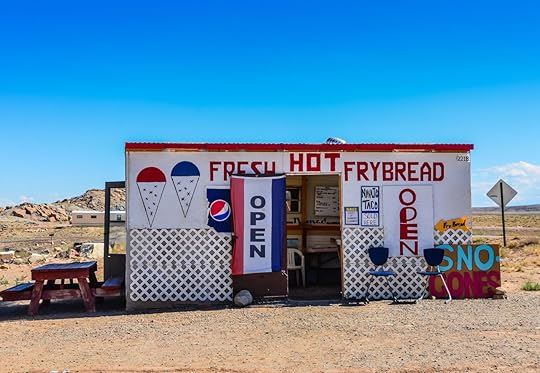
Photo: Sandra Foyt/Shutterstock
“A lot of families are still dependent on government rations, and a majority of families are still dependent on fry bread,” Yazzie says. “Not a lot of communities have access to fresh ingredients. [Many] tribal community members on our reservation live in rural areas. The closest gas station is at least 45 minutes away, but most tribal members do not have transportation.”
Yazzie’s push to center nutritious, Earth-grown vegetables in the Indigenous diet is part of a larger movement to decolonize the diverse cuisines of Native American people across the country. Yazzie, who has never cooked fry bread himself, acknowledges that it will likely always be present in the homes of many Diné people. He just doesn’t think it should be elevated as the best example of the dishes that ancestral Indigenous cuisine has to offer, and he’s actively working to de-center it: In 2017, Yazzie took part in a ultimately successful campaign to remove fry bread from the Miss Navajo Nation contest, where the Navajo taco had long been a staple.
“My perspective was [to] focus more on butchering lamb or sheep, or making traditional corn mush or tortillas out of fresh ground corn,” he says. Reimagining Indigenous food is just one step in this process. “Decolonization [is] not only food, but in the mind and body, in the spirituality, the way we carry ourselves.”

Photo: Terry Thomas/Shutterstock
Still, for many Indigenous people, casting fry bread as a symbol of oppression and trauma doesn’t tell the whole story. In a 2019 article for NBC News, writer Simon Moya-Smith argued that for Navajo people, fry bread is “good for the heart and certainly the soul” because it is a reminder that Native Americans “did everything they could to survive aggressive encroachment and persecution.”
Fry bread tends to elicit these kinds of strong feelings.
“We’re not against fry bread, we just don’t do it,” Sean Sherman, Oglala Lakota, and founder of The Sioux Chef, tells me. “But it’s not going anywhere.”
For many years, Sherman operated the award-winning Tatanka Truck, a Minnesota-based food truck that served Indigenous cuisine like wahuwapa, or grilled corn on the cob, and a bison taco served not on fry bread but a base of grilled corn and beans. In 2017, Sherman sold the truck to prepare for the opening of the Indigenous Food Lab, a restaurant and educational space intended to “reintegrate Native Foods and Indigenous-focused Education into tribal communities” — which has been temporarily delayed due to the COVID-19 pandemic.
“Our main focus is North American Indigenous foods,” Sherman says. “We [study] Mexico all the way through Alaska, and we don’t really see the colonial borders of what is Mexico and what is Canada. We’re looking at the immense diversity that sits out there. I’m really trying to understand how people were surviving, what kind of foods were they utilizing, what they were growing, and food preservation and storage [techniques]. We basically mapped what an Indigenous food system is.”
Sherman says he isn’t interested in making exact replicas of Indigenous recipes from the 1500s or 1400s. Instead, his work focuses more on applying ancestral food knowledge to the problems facing Indigenous communities today. Like Yazzie, Sherman is concerned with the health problems facing many people living on tribal land. He believes that giving Indigenous food knowledge back to his people would be a powerful antidote to issues like food apartheid (a lack of access to nutritious, fresh food), disease, and poverty.
“If people could start growing in Indigenous gardens, utilizing diverse Indigenous seeds from the different regions, utilizing permaculture, and understanding that vast knowledge of wild plants around us and using all this food source that’s literally right outside our doors, we would see a huge swing in health for those communities,” Shermans says.
Giving Indigenous people food sovereignty — the right to control where their food comes from, and how it’s produced and distributed — is what Sherman calls a “food revolution and evolution.” And that’s just one piece of the process: Sherman also hopes that “educating and enticing” Indigenous people to grow their food will stimulate tribal economies.
“We really want to bring a lot of economic prosperity to those communities, and we want more Indigenous food producers to come out of this too. Because where I grew up on Pine Ridge, I don’t think we’ve ever seen [under] 70 percent unemployment,” Sherman says.
Fry bread will never disappear from Diné communities, and maybe it shouldn’t. It carries a dual significance, as a perpetual reminder of land theft and colonization but also as a symbol of endurance, struggle, and, ultimately, survival. The goal is not necessarily to eradicate fry bread from Indigenous memory. Instead, chefs like Yazzie and Sherman want to broaden the idea of what Indigeous cuisine can look and taste like when it focuses on pre-colonial ingredients, and to harness ancestral knowledge to take back power and agency over the health and prosperity of Native American communities.
“We can learn and benefit so much from Indigenous knowledge,” says Sherman, “by getting people to really think about the land that they’re standing on, and how we can learn from the ancestors that had lived there for millennia before them.” 
More like thisLifestyleRez Roads is bringing #vanlife to the Navajo Nation
The post How Native American chefs are working to decolonize Indigenous cuisine appeared first on Matador Network.

Just Add Water Project
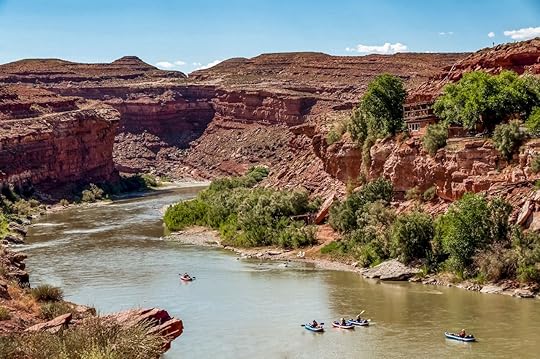
Colleen Cooley remembers hauling water from the washes, streams, and rivers of the Navajo Nation back to her family’s home as a child. Her family followed water, for both livestock and domestic purposes, and its abundance or scarcity was — and still is — an integral part of each day. Without running water in their home, the family had to retrieve water from its source. For Cooley and her family, water conservation wasn’t a statement or a cause; it was a way of life.
“Our elders and relatives taught us that we are born in water,” Cooley says. “We have all these different connections to water. It really taught my siblings and I, and a number of other families on the Navajo Nation, to really conserve water and to appreciate it. Because we have to haul the water and make it last.”
Climate change has made the duty of finding and hauling water more challenging, as the springs and washes of the Navajo Nation don’t hold nearly the amount of water that they used to. Their lifeblood, the Colorado, San Juan, and other major rivers across the west, face additional threats from development to overuse.
Now Cooley, and other water advocates from Indigenous communities, are sounding the alarm through film, and outdoor gear suppliers NRS and Orvis, along with American Rivers and Under Solen Media, are helping to get the word out through the Just Add Water Project.
A necessity that turned into a lifelong passion
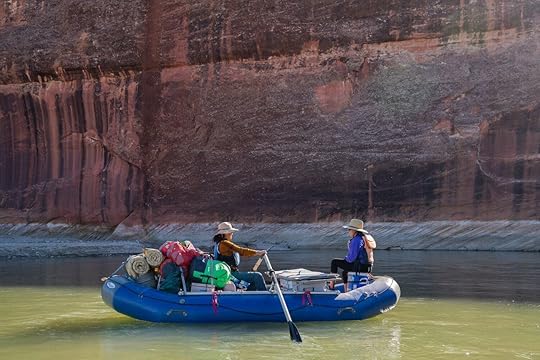
Photo: Spruce Tone Films
The Cooley family has been particularly passionate about rivers in the Southwest. Colleen’s sister Nikki founded the Native American River Guide and Cultural Interpretation Program at Northern Arizona University in Flagstaff in 2007. It was through this program that Colleen fell in love with rafting and eventually became a river guide herself.
“I felt an immediate connection with the San Juan River, and I just kept on going back,” Cooley says.
She joined as an assistant with operator Wild Expeditions in Bluff, Utah, eventually becoming a lead guide. She has guided the San Juan on and off for the past 10 years and remains captivated by the landscape, the geology, and the calm feeling she gets while on the water.
Now, Cooley and other river recreationists and conservationists are telling their stories through film. The film Water Flows Together, from SpruceTone Films, follows Cooley as she journeys down the San Juan River as it winds past Bears Ears National Monument in Utah. Water Flows Together was recently screened as part of the Just Add Water Project, a series of short films from adventurers and outdoors brands furthering the effort to make the outdoors more inclusive.
The films celebrate diversity in America’s river systems and tackle the issues that face them. They also highlight the role of nature and wild places in shaping the culture of indigenous communities, and the Just Add Water project and its sponsors amplify these voices to highlight the economic impact of America’s waterways — where it is now, and where it could be.
Each film is available to view free of charge:
Una Razón para Pescar (A Reason to Fish), which tells the story of Cuban American Dan Dan Diez and his grandfather, and their shared love for fishing and conservation
River of Return, in which Sammy and Jessica Matsaw, Shoshone-Bannock people from Idaho, take tribal youths onto the middle fork of the Salmon River and into educational classes focused on river and life skills
Water Flows Together, produced by and starring Colleen Cooley
This Land, which follows Faith Briggs and Adeline Thompson, who found a passion for conservation by experiencing public lands as BIPOC runners
Highlighting inclusion on America’s waterways
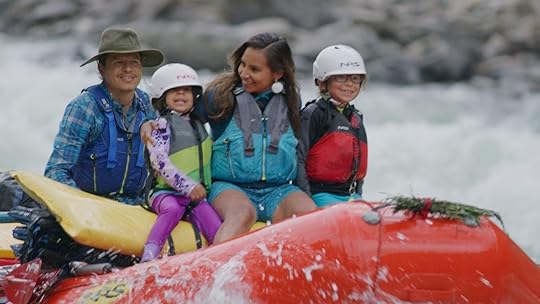
Photo: Skip Armstrong
Outdoor retailer NRS and Under Solen Media developed the idea as a way to not only highlight rivers that need protection but also bring forward inclusivity in both the river and conservation communities. American Rivers, which works to protect and restore Americas’ wild rivers, came on board as a sponsor.
“We’ve got to expand the audience for conservation; we’ve got to connect everyone with their rivers and the outdoors,” says Amy Kober, Vice President of Communications at American Rivers. “Representation matters when it comes to who you’re seeing and advertising.”
The original plan was a multi-city tour, but then COVID-19 happened. The project shifted to the web, with proceeds still benefiting local groups, and the online screenings were a hit. More than 200 people attended each, followed by intimate conversations about inclusivity in the outdoors. The videos are now available for free online streaming.
“I think we’ve started some important dialogue, I think we’ve challenged assumptions,” Kober says. “I think we’re getting people to think about the outdoors in a new way.”
The fight for water protections is the fight for environmental justice
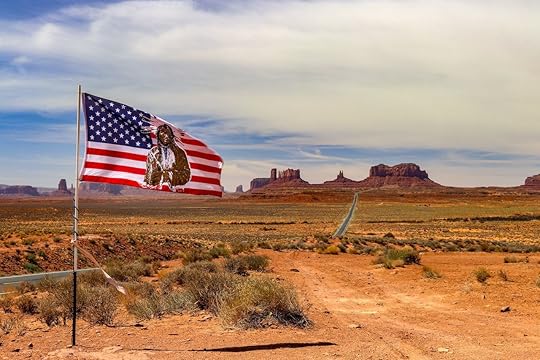
Photo: BrigitteT/Shutterstock
The overall goal of the Just Add Water Project, and of the individual films, is to fight for environmental justice for the communities depending on America’s waterways for their livelihood, their food, and their culture. Many don’t realize that water issues are environmental justice issues, much in the way that energy and carbon emissions are.
“This is absolutely an issue of environmental justice,” Kober says. “It involves treaty rights; it involves many different tribes and their rights to salmon.”
The Snake River in Idaho is a striking example. Four dams on the lower Snake pose a particular threat to these communities and the salmon they depend on. American Rivers is working to have them removed.
“When you look at the cost of those four dams and the benefits they provide, it’s totally imbalanced,” Kober says. “Yes, there are benefits, but there has been study after study showing that you can replace those benefits in a cost-effective way, with energy, irrigation, and barge transportation.”
The river, she says, is key to the region’s entire economy. Recreators flock to the Snake River to raft, kayak, and fish. The communities living on its banks depend on the river for food and irrigation.
“It’s not just about removing dams,” Kober says. “It’s about restoring the river and all that it means. And, the fact that we can make our economy and our infrastructure stronger.”
Where you can go to help
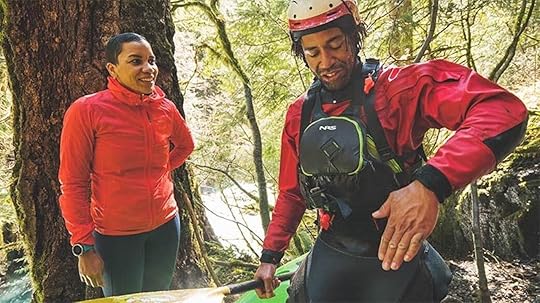
Photo: Cam Mcleod
Beyond the power of film, multiple non-profit organizations are working to conserve and protect America’s waterways.
“We’re looking at the future of Just Add Water and asking, ‘Is this something we can keep going?’” Kober says. “As an outdoor industry, there’s a lot of opportunities for learning going on.”
American Rivers has been working for the past couple of years on an inclusivity plan, to be released later this year. It has also developed an ongoing plan for helping the Snake River grow back into the country’s best salmon river.
“There’s no finish line. This is a commitment and it’s going to take everyone working together.”
In this vein, American Rivers released a report to Congress in early July, “Invest in Rivers,” that breaks down the economic benefit of rivers. The report asks Congress to invest $500 billion over the coming decade to support water infrastructure and river restoration, citing the economic benefit in terms of job creation, recreation potential, and environmental restoration to minimize maintenance and emergency services. The numbers are huge — river recreation and restoration currently support more than 130,000 jobs in Colorado alone. You can support the initiative by signing this petition.
A few non-profits work directly with the Navajo Nation and other Native tribes to address the issues that Indigenous communities face, specifically. Referring to the COVID-19 pandemic, Cooley says, “Our communities are vulnerable and affected by this pandemic because we don’t have easy access to water.”
Two organizations Cooley cites as working to address the issue are Dig Deep from the Navajo Water Project, which is raising money to deliver water to Navajo families who do not have tap water in their homes, and Red Feather Development Group, an organization building handwashing stations across the Navajo Nation for families without running water. Additionally, the groups Navajo Yes and Adventures for Hopi work to empower Indigenous youth and hosts a number of educational events.
Cross-sector initiatives like the Colorado River Basin Drought Contingency Plan have long-term routes to conservation, reclamation, and addressing Indigenous water rights — giving a voice to communities that had previously been left out of the conversation.
“A lot of these problems are disproportionately impacting Black, Latinx, and Indigenous communities,” Kober says. “We all need to understand these connections. You can’t just talk about rivers without talking about water equity. If you work together, that’s how we’re going to get these solutions. We’ve been playing defense for a long time, but now it’s time to look forward. What kind of future do we want? Let’s build it.” 
More like thisLifestyleRez Roads is bringing #vanlife to the Navajo Nation
The post Through film, BIPOC people advocate for wild rivers of the American West appeared first on Matador Network.

UK lifts travel quarantine
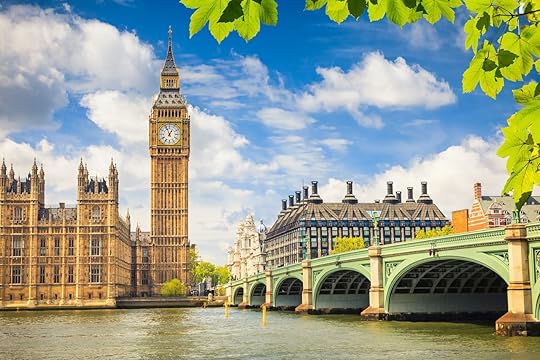
Until now, travelers entering the United Kingdom from pretty much everywhere in the world were required to self-quarantine for 14 days upon entering the country, but since July 10, it has all changed.
The UK is now allowing residents of more than 70 countries and territories to enter the country without having to quarantine. Before you ask — no, the US is not on the list, meaning US citizens will still be required to quarantine for two weeks if they want to visit the UK.
Since July 10, any traveler coming from one of the following approved countries and territories will not be required to self-isolate for 14 days:
Akrotiri and Dhekelia
Andorra
Anguilla
Antigua and Barbuda
Aruba
Australia
Austria
The Bahamas
Barbados
Belgium
Bermuda
Bonaire, St. Eustatius, and Saba
British Antarctic Territory
British Indian Ocean Territory
British Virgin Islands
Cayman Islands
Channel Islands
Croatia
Curaçao
Cyprus
Czech Republic
Denmark
Dominica
Falkland Islands
Faroe Islands
Fiji
Finland
France
French Polynesia
Gibraltar
Germany
Greece
Greenland
Grenada
Guadeloupe
Hong Kong
Hungary
Iceland
Ireland
the Isle of Man
Italy
Jamaica
Japan
Liechtenstein
Lithuania
Luxembourg
Macao (Macau)
Malta
Mauritius
Monaco
Montserrat
Netherlands
New Caledonia
New Zealand
Norway
Pitcairn, Henderson, Ducie, and Oeno Islands
Poland
Reunion
San Marino
Seychelles
South Korea
South Georgia and the South Sandwich Islands
Spain
St. Barthélemy
St. Helena, Ascension and Tristan da Cunha
St. Kitts and Nevis
St. Lucia
St. Pierre and Miquelon
Switzerland
Taiwan
Trinidad and Tobago
Turkey
Turks and Caicos Islands
Vatican City State
Vietnam
Serbia, which now welcomes US travelers, was removed from the list on July 11. On Friday, Croatia announced it would allow US travelers within its borders, but the nation has remained on the list of the UK-approved countries.
Note that — unlike England, Wales, and Northern Ireland — Scotland is requiring that travelers from Spain quarantine for 14 days upon arrival.
If you’re traveling from countries not on the approved list, you will have to provide UK border control with your contact details, including phone number and address for your UK accommodation where you will be in quarantine for 14 days. Failure to self-isolate could result in a fine of up to $1,270. 
More like thisNewsThis map shows how weak US passports are right now
The post The UK has lifted its mandatory quarantine for travelers from dozens of countries appeared first on Matador Network.

LGBTQ summer destinations COVID-19
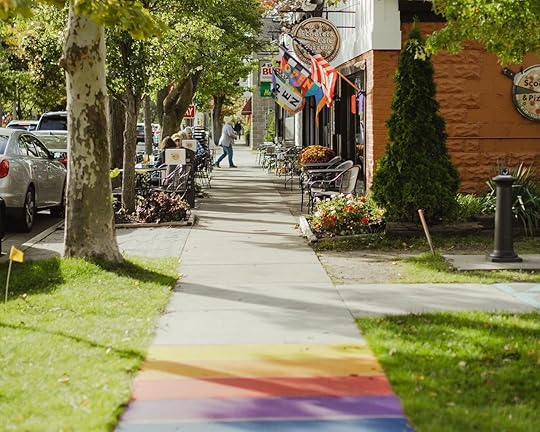
Over the past century, queer summer enclaves formed across the United States and gave the LGBTQ community safe spaces where they could vacation without worry. This summer, the businesses in these towns are reinventing themselves as new types of safe spaces that meet the demands of the on-going health crisis.
From a parking-lot concert series in Saugatuck, MI, to circles surrounding lounge chairs in Guerneville, CA, the ingenuity is endless. Whether it’ll be enough for these towns to weather the financial impact of reduced tourism remains to be seen.
“The economy, in general, is hurting, but small towns like Provincetown are hurting even more,” says Anthony Fuccillo, the director of tourism in Provincetown, MA. “There aren’t chain stores here. It’s all about these privately owned, small businesses that are incredibly curated by the owners.”
“There’s no better time to shop local,” he implores. “And when I say shop local, I don’t only mean shop in your hometown, but come to a small town like Provincetown and shop here.”
This summer, it’s time for queer people to support the small businesses that have historically supported them. “Visitors and tourists might not see it, but they’re visiting a local economy when they come here for vacation,” says Fuccillo. With diminished tourism, these summer communities are losing a critical part of their economic engine.
“I think of what’s going on in this world and how we all need to come together as human beings,” says Fuccillo. “[Provincetown] is a place where people do that.”
The US’ rainbow-hued roster of queer summer haunts is no different. Here are a few of the resourceful businesses leading the charge and how you can help their communities responsibly.
Saugatuck Center for the Arts — Saugatuck, Michigan
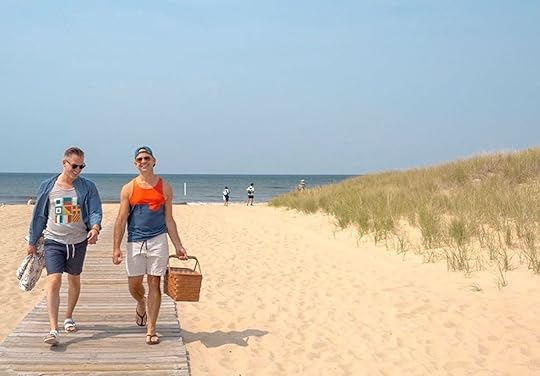
Photo: SaugatuckCVB/Facebook
Picture-perfect Saugatuck and the neighboring town of Douglas have attracted artists for over a hundred years, and this season, the pandemic is putting their creative minds to the test. Luckily, the people running the show in this lakeside village are ready for the challenge.
“I feel like this is a summer of half a loaf,” says Kristin Armstrong, executive director of the Saugatuck Center for the Arts (SCA), “and half a loaf is better than no loaf, doggonit.”
SCA — which regularly serves up Broadway-caliber performances at the Mason Street Warehouse along with world-class art exhibitions, educational programming for kids, and even a weekly farmers market — has already reimagined its summer offerings to meet the demands of the on-going health crisis.
Much of its “2.0 programming,” as Armstrong likes to call it, is thanks to an outdoor deck prophetically built this past winter. Fully equipped with a thrust stage facing the parking lot, the complex is primed for performances under the stars. “We thought maybe we’d use this once this summer,” Armstrong admits, “but now we’re going to be using it maybe seven, eight, or nine times.”
The center will make good use of its newest architectural edition with a summer concert series that’s BYOC (bring your own chair). “We’ll make sure we have everyone appropriately spaced so you can feel safe, comfortable, and enjoy some outdoor entertainment,” says Armstrong. “Otherwise, there’d be no entertainment — and that, my dear, would be a tragedy.”
Like most communities around the US, open-air experiences are the name of the game this season. The Dunes — one of the country’s largest gay resorts — has turned its complex inside-out to offer drinks and dancing while indoor service is suspended. Owners of the retail store Landsharks have donned Katy Perry-style shark suits and danced door-to-door delivering orders. Saugatuck’s best selling point this summer, however, is its abundance of offerings for outdoor enthusiasts.
“[Lake Michigan] is right there, we’ve got incredible dunes, beaches, and woodlands, and we’re smack in the middle of the Michigan fruit belt,” boasts Armstrong. “We’ve got amazing farm-to-table food, great distilleries, craft breweries, and vintners.”
The thing visitors will miss most in Saugatuck this summer is physical connection, but Armstrong is hopeful. “People are saying, ‘We’re gonna double down next year; we’re gonna hug like there’s no tomorrow,'” she beams.
Physical distancing aside, the reason this tiny Michigan town has been a welcoming spot for LGBTQ travelers remains. “Saugatuck gives people permission to be who they want to be instead of who they’re expected to be,” says Armstrong. “Drive to Saugatuck. We have space, we know how to do it, and we promise — we won’t hug you this summer. We’ll save it for next year.”
Highlands Resort — Guerneville, California
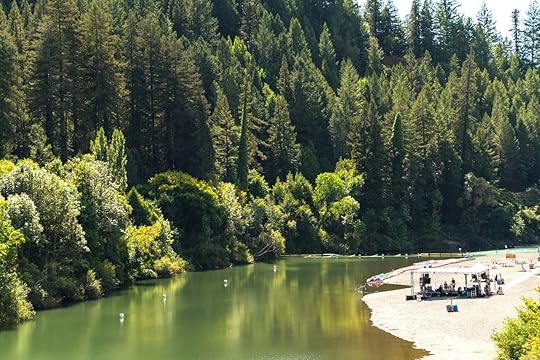
Photo: Pedro Gutierrez/Shutterstock
Guerneville, an LGBTQ outpost two hours north of San Francisco, is no stranger to calamity. “Last year, we had floods, we had fires, we had our power shut off for fear of fires, and then, of course, the pandemic this spring. It’s been tough,” admits Lynette McLean, who owns the “straight-friendly,” rainbow-loving Highlands Resort near the Russian River.
“It floods here sometimes, and when the waters come up, you get these islands of neighbors,” says McLean, who has lived in Guerneville for 25 years. “That sort of cements the idea that we’re all in this together. Each little neighborhood has a sense of community, and when times are tough, we all band together for a larger sense of support.”
When the pandemic shut down their small town, Guerneville residents did what they do best — take care of one another. “A lot of restaurants in Sonoma County started making meals for people who couldn’t get out or couldn’t cook or were homeless,” says McLean. “People that bake were bringing goodies to their neighbors. It’s been sweet.”
While business at the resort is going well — “right now, the first week I have a room available for a weekend stay is in mid-August,” she says triumphantly — it’s certainly far from ordinary. “We’ve had to close down a lot of the resort’s communal aspects, which is troubling, because what we really like about our resort is that people come, make friends, and share meals. That’s such a valuable part of it.”
“This isn’t the party at the pool year,” McLean notes. “It’s the shelter at our place, rather than your place kind of year.” Party or not, it’s still worth packing some swimwear in your suitcase. “We’ve got crop circles around our lounge chairs at the pool, and everybody’s safely distanced,” she assures.
For those fearing cabin fever, the area’s bucolic bounty is still worth the trek. McLean recommends making a trip to the Pacific Coast, or kicking back to enjoy their two-and-a-half acres of land. “Wineries are still doing tastings by appointment so they can space people appropriately,” she adds. “There’s a lot of craft brews, small distilleries, and places that make cheese, too.”
Like any summer town, most Guerneville businesses make their money in summer in preparation for winter. “For a lot of businesses, there’s not a lot of wiggle room,” McLean warns, and owners will undoubtedly welcome outsiders. Without them, Sonoma County’s queer island may very well disappear with the next big flood.
McLean has just one ask for out-of-towners: “Do your grocery shopping where you live and bring it with you. Don’t overwhelm the grocery store in town.” And, of course, wear a mask. But that’s just business as usual.
Aqua Bar & Grill — Rehoboth Beach, Delaware
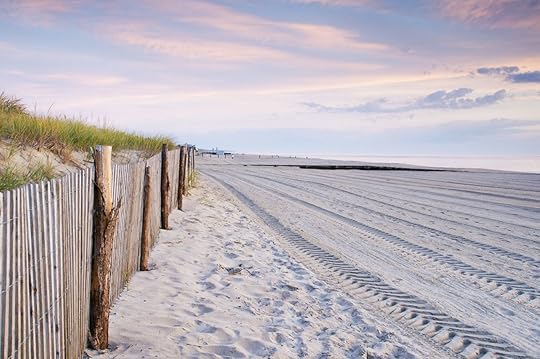
Photo: Bruce Goerlitz Photo/Shutterstock
Rehoboth is a Hebrew word that roughly translates to “plenty of room” or as Tyler Townsend puts it, “all are welcome.” It’s also a seaside town in Delaware that’s been a refuge for the LGBTQ community since the 1940s. Townsend, a Rehoboth native, says, “It’s a unique place where people from different places with different views come together, put their differences aside, and relax at the beach.”
Although the town’s year-round population is only 1,500, it swells to nearly 25,000 between Memorial and Labor Day. This year, however, is a “sad situation,” says Townsend. “It’s not the same.”
Townsend became a co-owner of The Pines, a local farm-to-table tavern, two years ago, and purchased the queer-friendly Aqua Bar & Grill last summer. “During a normal summer at Aqua, the outdoor space would fill with 200 people,” he says. People would grab a drink and mingle among the crowd, “but now, you’re stuck at your table.”
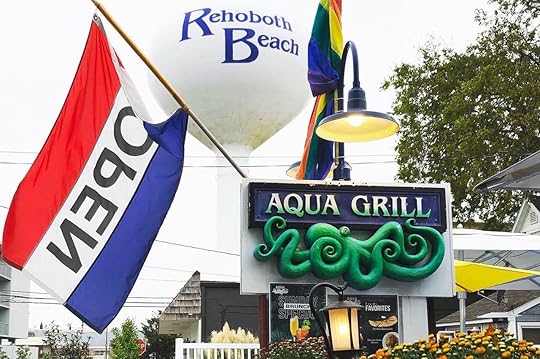
Photo: AquaGrill Reho/Facebook
The Pines and Aqua are doing their best to adapt. “At both places, we have a ton of outdoor space; Aqua has the biggest outdoor space in Rehoboth,” says Townsend. “We put our tables eight feet apart, we have table service for everyone, and we’re taking extra steps with safety and sanitation.” In addition to complying with state guidelines, The Pines is hosting a drag brunch for the first time, and Aqua will have a DJ spinning tunes for a seated tea from 5:00 PM to 8:00 PM on Saturday and Sunday to provide entertainment and “give the performers some work.”
While both restaurants have been adept at reinventing themselves, it isn’t easy. “If you’re only doing 40-50 percent of what you were doing last year, it’s financially tough,” Townsend admits. Fortunately, “the community in Rehoboth has rallied around each other.” Local restaurants even started an email chain to ensure everyone is on the same page with messaging and protocols. “Everyone wants to help each other out, get through this, and succeed,” he says.
With the immense amount of work local business owners have put into preparing for visitors this summer, Townsend still stands firmly by the meaning of Rehoboth. “We’d love to have you this summer,” he says. “All we ask is that you respect what the state and town have put in place so we can make it through this together.”
Adam’s Nest — Provincetown, Massachusetts

Photo: Rolf_52/Shutterstock
Before Adam Singer, the owner of Adam’s Nest, left Florida for Provincetown this spring, his parents asked, “Are you sure you want to go back?”
“This is my business, this is where my friends are, and this is where my life is,” thought Singer. “If this is the new normal, I have to go, and I have to figure out what it’s going to look like and adjust accordingly.”
His store — a quirky-queer collection of graphic tees, provocative art, and an assortment of other goods — is much more than a retail establishment. “I run a business with purpose,” Singer says proudly. By promoting a roster of LGBTQ artists, selling goods that celebrate queer culture, and donating a portion of his profits to charitable organizations like The Trevor Project and SAGE, Adam’s Nest has a reputation as one of the most sociopolitically-conscious retailers along Provincetown’s Commercial Street.
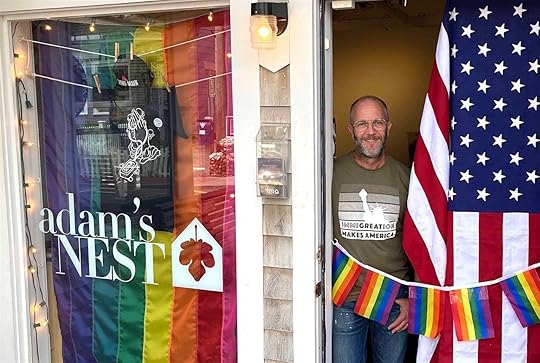
Photo: Adam’s Nest/Facebook
“When a mother comes in, has a conversation with you, and says, ‘Thank you for making the world a safer place for my trans child,’ I can’t put a price on it,” says Singer. “That’s the sort of conversation I have the luxury of having all summer long.”
Although there might be less of these conversations this summer — Singer’s shop is only 180 square feet and can only hold two people at a time — Adam’s Nest is also a successful e-commerce business that will support him through the pandemic. As a result, Singer is still selling merchandise to support the local community.
“We did one collaboration with a queer street artist out in LA named Jeremy Novy to make a ‘Soap and Hope‘ graphic tee-shirt. One-hundred percent of the profits were donated to COVID-19 relief funds,” he says. A subsequent promotion benefited Provincetown charities, including Helping Our Women, AIDS Support Group of Cape Cod, the Provincetown Soup Kitchen, and Outer Cape Health Services.
Other businesses in the LGBTQ capital of Cape Cod haven’t been so fortunate. At the beginning of the season, “everyone was suffering,” says Fuccillo. “In a town that depends on tourism, businesses had to close. Inns lost entire reservations, and restaurants could only offer take-out until a few weeks ago.”
Following relaxed zoning laws, restaurants took to the streets to abide by state-mandated guidelines. Front Street, an Italian restaurant that never had outdoor seating before, now dines outside. Jimmy’s Hideaway put in a patio. Victor’s expanded its outdoor space. The Red Inn turned a cocktail space into a dining area.
Other businesses have met the pandemic’s demands by going virtual. Seth Rudetsky, the Broadway pundit who usually hosts a summer concert series at the Art House, is streaming his shows online. For anyone unable to check out Ptown’s exceptional array of art, they can take a virtual tour of over 30 galleries at the Ptown Gallery Stroll.
Hopefully, these modifications will be enough to keep these seaside businesses afloat. “Most do their business in 10-12 weeks every year. If they don’t make it now, they’re not going to make it at all,” warns Fuccillo.
“If you love these places and you want them to survive, do what you can to support them,” pleads Singer. That may mean making a donation, buying gift cards, or shopping online.
Of course, if you plan to wear a mask and practice social distancing — even at the Dick Dock — Ptown is still open for business. “If you love tea dance, that won’t be here,” Singer laments. “But if you come to Provincetown to go to the beach, walk the street, and go to the bike paths — that’s all there. That’s why I opened a business here.” 
More like thisNews‘RuPaul’s Drag Race’ queens to host a drive-in summer tour
The post How iconic LGBTQ summer spots in the US are reinventing their businesses appeared first on Matador Network.

What is flaneuring

This is the Travel Take, where Matador’s writers and editors make the case for their favorite travel hacks, tips, and personal tics.
There are certain cliches that stick with you no matter how ridiculous you think bumper sticker wisdom is. For me, it’s always been “not all those who wander are lost.” The quote comes from a poem in J.R.R. Tolkien’s book The Fellowship of the Ring. Today, it’s largely disassociated from the book and is found on blogs, quote round-ups, and those cheap wooden signs with witticisms painted in white.
In pre-COVID times, the saying was just a little something that popped into my head when I didn’t know where I was (something that happens far too often). But the concept of a person who wanders without a destination long predates Tolkien’s writing. The word for these people is flâneur, which refers to someone who strolls with intention, but without anywhere specific to go.
Essentially, a flâneur listens to and observes the present world around them. The French term was first used in 1884, according to Merriam-Webster, and various definitions range from the more luxurious sounding “idle man-about-town” to the less opulent “idler; dawdler; loafer.” It’s a loose and not altogether flattering definition, but the key to being a proper flâneur is in the observation: A flâneur may not know where they are going, but they’re noting the sights, sounds, smells, and feelings of everything around them as they go.
The original flâneur wasn’t perfect. They signified a leisure class unobtainable for many, and the practice was largely restricted to men of means. The original use of the word carried the connotation of someone who could observe capitalism around them while not being negatively impacted by its ceaseless work culture. Few, after all, could afford to detach and be purposefully unproductive with nowhere to go. Time for reflection is a privilege to this day, albeit one that’s more accessible than it was back then.
In Mexico City, a few weeks before the pandemic, my fiancee and I made our way to Mercado de la Merced, Mexico City’s largest market. We walked down streets of vendors selling cleaning supplies and caught snippets of intense bargaining. We squeezed past towering fruit stalls with stacks of avocados far taller than anyone walking past, and we smelled pockets of citrus and spices throughout the more than 947,000-square-foot market. We didn’t know where we were going or where we were most of that time — as to be expected in a place that large — but we did know we wanted to soak in everything we could on that first trip.
I’ve had similar experiences in Montreal, Marseille, and Montgomery. I try to set aside time to walk and simply take in life wherever I travel, whether it’s my first time there or my fiftieth. Yet the global pandemic has made the tight markets I love a little less inviting for the time being. Taking in the daily life of the world’s great cities doesn’t readily adapt to social distancing measures. Still, there’s an argument to be made that there’s never been a better time to embrace the flâneur lifestyle.
Destination restaurants are closed or operating in a limited capacity. Attractions, for the most part, have shuttered until further notice, while many of those that are open, like state and federal parks, are flooded with people. Now, people must find adventure and travel close to home. Going outside is good for you whether you have anywhere to go or not, and outside is much safer than inside a public space.
Without a destination, there’s nothing to do but walk and observe the details — an interesting piece of architecture you’ve passed countless times without noticing, for example, or a street corner where songbirds tend to gather. That’s not to say you should detach completely from the world like those first flâneurs. In fact, do the opposite: Take note of the changes that have happened in response to COVID-19 and the Black Lives Matter protests. And with everything that you notice, take the time to reflect and understand.
The constant connectivity of modern work isn’t as destructive as work was in the 19th century. Finding the proper work-life balance still takes effort, though, as does finding the balance between keeping up with the news and spending time with your own thoughts. We have “cures” like apps that quiet all notifications for blocks of time, and screen usage notifications that keep us up to date on how many hours we’ve stared at our phones. However, the best way to reset is completely manual.
So wander, safely, around. Channel your inner flâneur and reflect on the small things that make up life around your block. Think, for a moment, on the present and study what’s around your home as if it’s a city you’ve never been to. Traveling may be difficult or impossible for the foreseeable future, but the flâneur lifestyle brings the stimulation and education of exploration to you. 
More like thisFood + DrinkTo truly understand a country, go to the grocery store
The post The French flaneur lifestyle is the reset you need in these times appeared first on Matador Network.

Disney’s reopening video edits

Disney World has reopened this weekend amid a severe spike in COVID-19 infections in Florida. In conjunction with the reopening, Disney released a video to welcome guests back to the park and to generate enthusiasm about visiting Disney attractions. It didn’t exactly have the desired effect.
View this post on InstagramA post shared by Disney Parks Jobs (@disneyparksjobs) on Jul 11, 2020 at 5:28am PDT
The video features Disney employees wearing masks and repeating the phrase “welcome home.” The imagery of the masked employees, however, together with their muffled voices, makes for an eerie video. People have been having some fun with the footage, editing it to make it even creepier than the original.
One user overlaid the song from the horror film Us to create a horror movie-esque trailer.
Say less pic.twitter.com/UObHjVQqC8
— Kiyla Monét (@IAMKiylaMonet) July 11, 2020
Another edited out the words “welcome home” and replaced them with “stay home” to encourage potential visitors to rethink their trip.
They finally got the Disney World ad right. pic.twitter.com/avy2PUOQXQ
— Jimmi Simpson (@jimmisimpson) July 12, 2020
Others got similarly creative with the video, editing in the scores from Stranger Things and The Shining. 
Fixed it #Disneyworld pic.twitter.com/GpARxjUksr
— Kat Dennings (@OfficialKat) July 11, 2020
Disney World have released an ad showing they're open for business. It's sinister AF. If you're wondering how it plays with the score from The Shining… it's at home… pic.twitter.com/6i5Wwvbj2n
— Charlie Gee (@Charlie_A_Gee) July 9, 2020
More like thisNewsDisney World is set to reopen this weekend amid Florida COVID-19 surge
The post People are editing Disney’s reopening video into horror trailers appeared first on Matador Network.

Washington Redskins to change name

After years of controversy and pressure, the Washington Redskins have finally announced that they will change their name.
The NFL team’s name change has been anticipated for some time now, with ESPN’s Adam Schefter reporting just last week that the franchise would cease using Native American imagery in its branding. The Native American chief logo, designed by a Native American, has been with the franchise since 1971.

Photo: dean bertoncelj/Shutterstock
On July 3, the team announced that it would undergo a thorough review of the name that many considered offensive. Although multiple sources said the name would be changed, nothing concrete has been confirmed by the team until today. Previously, owner Dan Snyder was vehemently opposed to any name change, but the events following the death of George Floyd have heightened pressure to do so.
This past month, a letter signed by 87 investors and shareholders was sent to team sponsors asking them to stop conducting business with the team unless the name was changed. Some sponsors, like Amazon, Walmart, and Target issued statements urging the team to change its name, vowing to stop selling Redskins merchandise if they did not do so.
The new name and logo has yet to be revealed. 
More like thisActivismHow populist leaders around the world rule by division
The post appeared first on Matador Network.

July 10, 2020
Dominican Republic summer 2020
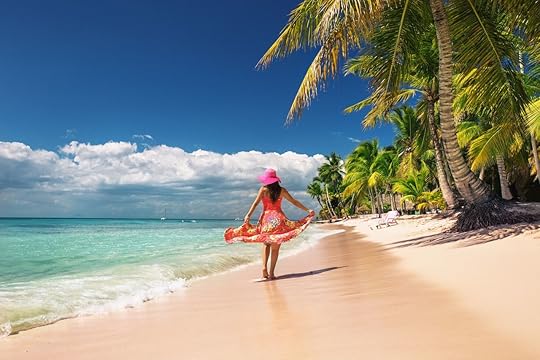
With bright blue sky, turquoise water, and palm trees that softly sway in the breeze, the Dominican Republic is one of the most quintessentially beautiful Caribbean islands to explore. A country where tourism is a huge pillar of the local economy, the Dominican Republic suffered a major loss by closing its borders in mid-March due to the COVID-19 pandemic. Now, three months later, the nation is up and running, and excited to welcome tourists again with ramped up safety measures.
The Dominican Republic is arguably one of the best places to plan a Caribbean vacation post-COVID. While the capital, Santo Domingo, is densely populated, the rest of the country is as rural as it gets. You can bask in the sunshine of Samana’s tropical beaches to the northeast or discover Jarabacoa’s hidden waterfalls and luscious vegetation further north.
If you’re dreaming of an island escape, here’s everything you need to know about planning a safe, responsible, and undeniably one-of-a-kind trip to the Dominican Republic during the summer of 2020.
What to know before booking your flight
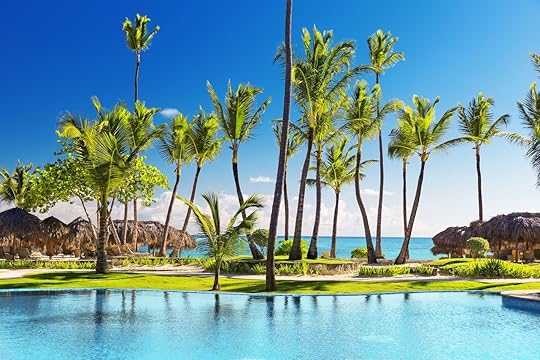
Photo: Preto Perola/Shutterstock
The Dominican Republic officially opened for international tourism on July 1. The country has two major international airports at Punta Cana (PUJ) and Santo Domingo (SDQ), both of which offer frequent flights from the United States typically operated by Spirit Airlines and JetBlue.
Visitors will not need to present or take a COVID-19 test upon arrival and will not need to be quarantined. There are, however, additional safety measures put in place. All incoming travelers will have their temperature checked at the airport upon disembarking the plane. If a passenger shows a body temperature higher than 100.6F or presents any other symptoms, they will be instructed to take a rapid COVID-19 test on the spot and may be asked to go into isolation. Check here for the latest updates regarding the country’s health regulations.
The airport terminals have also established distancing guidelines to ensure that travelers keep a safe distance from one another. The use of face masks for passengers and airport staff is mandatory. Travelers will be asked to sign a Health Affidavit, stating that they have not experienced any COVID-19 symptoms in the 72 hours prior to arrival in the Dominican Republic and provide contact information for the next 30 days.
How bars and restaurants are upping their hygiene protocols
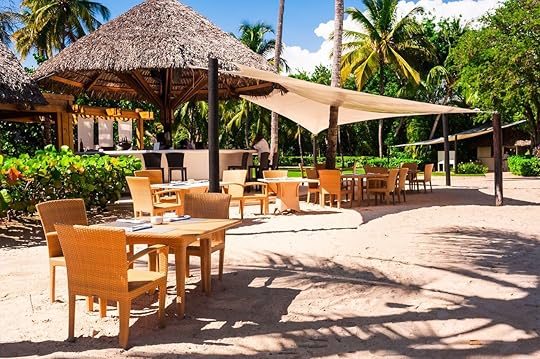
Photo: Andrii_K/Shutterstock
Bars and hotels have been instructed to increase the level of sanitation and test all employees on a bi-weekly basis. Capacity for customers is limited to 35 percent, and all patrons need to wear masks. Bars are providing antibacterial dispensers readily available to customers, and restaurants require that you sit at least six feet away from one another. Employees will diligently be cleaning surfaces between customers to ensure maximum sanitation. Some restaurants will be providing digital or disposable printed menus to ensure as little physical contact as possible between guests.
Hotels will be taking the temperature of all incoming travelers and will have them sign a health form at check-in stating that they haven’t been experiencing COVID-19 symptoms. Additionally, hotels will provide free face masks and will ensure a safe distance between guests in all common areas. All luggage will be disinfected and the self-serve food and beverage buffet will be eliminated altogether.
Consider remote villages and small towns for your base
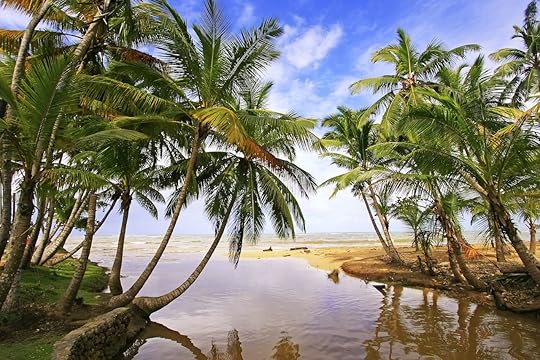
Photo: Don Mammoser/Shutterstock
If you’re in need of a tropical vacation away from it all, head to the northeast and explore the Samana Peninsula. Remote villages and small towns welcome you with ample nature, ensuring plenty of space to properly observe physical distancing. El Valle is one such destination that has only recently reached a level of prominence with travelers.
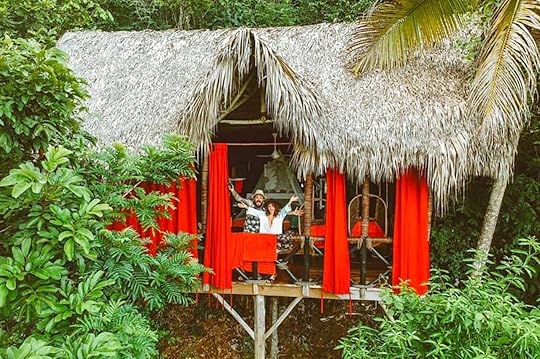
Photo: Dominican Tree House Village/Facebook
Focused on wellness and community, El Valle village is home to the Dominican Treehouse Village — a luxury treehouse resort that allows you to fully integrate into nature. Each treehouse has its own entrance and is separated from the neighboring property by at least 30 feet. A quarter-mile up the road, the Unique Exotic Eco Hotel is another great option. The trendy and stylish space attracts a diverse crowd of artists and bohemians. Its rooms are sufficiently distanced from one another as well, and there are a few different communal areas so you don’t have to be within close proximity to other guests.
Just next door, the Ganesh Hostel is the ideal alternative for those who want to meet new people and enjoy paradise for a fraction of the cost. Its outdoor pool and front porch invites you to relax with your travel partner or group without any crowding. If you are looking for a wellness element to your vacation, El Valle Lodge prides itself on its wellbeing and farm-to-table cuisine. Personally run by a family from Argentina, the lodge is committed to offering a nourishing vacation experience through yoga, meditation, and homemade meals.
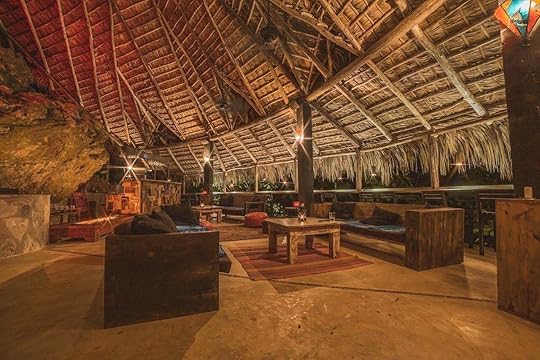
Photo: UniqueHotel/Facebook
What these resorts have in common is that they are all privately owned and are pillars of the local community, employing more than half of its residents. When you stay in El Valle, you can rest assured that your dollar goes toward strengthening a close-knit community. Moreover, all of these boutique lodges have few rooms, ensuring that crowding will never be an issue.
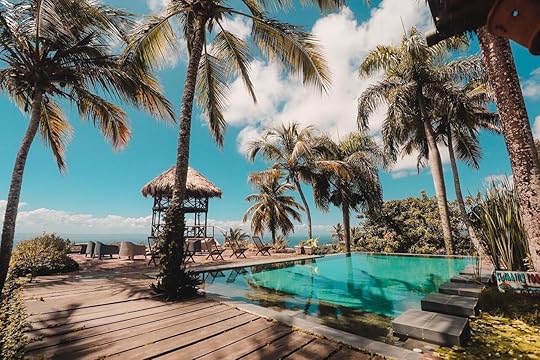
Photo: Hacienda Cocuyo/Facebook
If you’d like to stay closer to the action and have a bird’s-eye view of the larger nearby town of Samana, stay at Hacienda Cocuyo. Geared towards wellness, the small boutique hotel that sits on top of a cliff offers modern amenities and air conditioning, while retaining eco-luxury characteristics. Offering only 10 rooms, Haciendo Cocuyo is ideal for romantic getaways or small groups of family and friends.
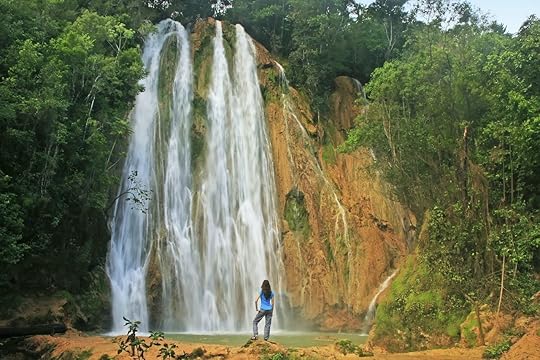
Photo: Don Mammoser/Shutterstock
Further up, the peninsula gives visitors the opportunity to explore El Limon’s impressive waterfall. Salto El Limon is a 130-foot roaring tower of water nestled into one of Samana’s hidden corners. At the entrance of the village, you’ll find a natural pool where locals go to dance, relax, and enjoy a refreshing dip. In the mornings you’ll find the space to be quite empty. The Samana Eco Lodge just down the road from the pool is a collection of sustainable accommodations run by a local family. Each of their bungalows and treehouses is at least 12 feet apart from one another and has its own porch. The garden is extensive, allowing for enough freedom of movement without running into other guests. Across the street, you’ll find Don Juan Mejia’s cigar workshop — a local landmark where you can have a one-on-one meeting with the famous local craftsman who used to roll cigars for Winston Churchill and Frank Sinatra.
Look to remote beaches and you might find them all to yourself
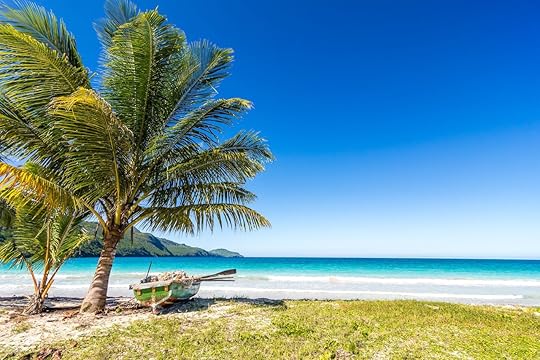
Photo: Klemen K. Misic/Shutterstock
Between El Valle and Las Terrenas, you’ll find dozens of large, uninhibited postcard beaches with fine golden sand and crystal blue waters. Playa El Limon is one of the many such beaches that have no development. Locals come here to fish and travelers enjoy undisturbed peace and quiet under the hot Caribbean sun.
Playa El Valle is another gorgeous spot that is hardly ever crowded. The beach gained popularity in 2019 thanks to bachata superstar Prince Royce and artist El Alfa who shot music videos on site. Playa El Valle still feels completely authentic though. There are only two restaurants here, Mami’s and Josefina’s, where the tables are spaced out sufficiently to avoid contact. Both serve the quintessential Caribbean dishes — catch of the day, fried plantain, beans and rice, and fresh coconuts at very affordable prices.
A 20-minute, private scenic boat ride from Playa El Valle, you’ll discover Playa Ermitaño — a secluded spot where you can swim your heart out or have a barbecue. It’s hard to argue which part of the experience is better — being on the beach or the boat ride to it, which allows you to take in views of limestone rock formations and lush green mountains that flank the remote spot.
Keep your distance and experience local culture and cuisine in Las Terrenas
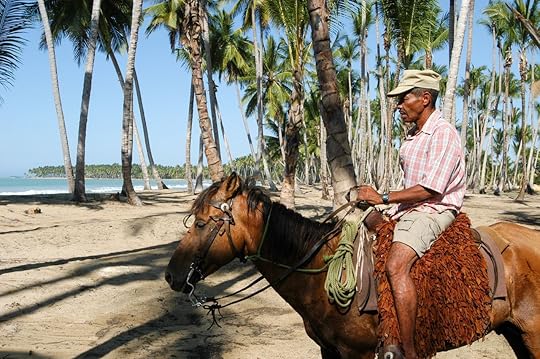
Photo: Stefano Ember/Shutterstock
Las Terrenas is one of the most beautiful coastal towns in all of the Dominican Republic. Formerly a French settlement that is known for its expat community, Las Terrenas has plenty of beachfront restaurants that serve gourmet meals, small Italian gelato shops, and boutiques where you can shop for local arts and crafts. You can experience the best of the Dominican Republic dance scene by taking a private, one-on-one bachata class with Bolivar — the world-famous bachata dancer who runs a local dance school.
Largely a pedestrian town, Las Terrenas is easy to get around, though most visitors prefer to rent an ATV and cruise around on four-wheels. Head over to Las Ballenas Beach, known for its whale-watching season where every spring you can observe humpback whales in their natural habitat.
Find a mountain refuge up north
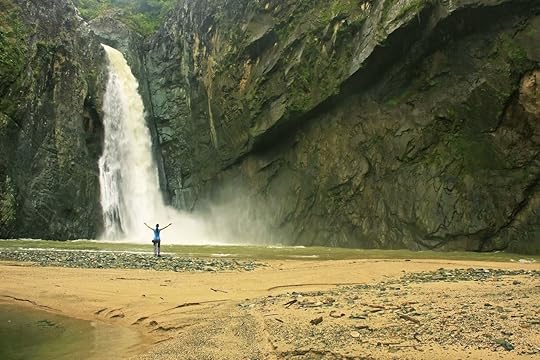
Photo: Don Mammoser/Shutterstock
While the Dominican Republic is known for its beaches, the country has a large catalog of picturesque mountain villages up north in La Vega with the hamlet of Jarabacoa taking the number one spot for scenic beauty. River rafting at the Jarabacoa River Club is one of the area’s highlights. Another water adventure is the Salto de Baiguate Waterfall — a local stunner nestled below a canyon that drops down from a height of 82 feet to an emerald green pool of freshwater.
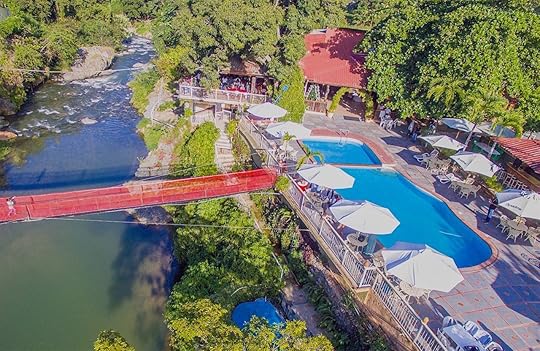
Photo: Jarabacoa River Club/Facebook
If you’re in search of adrenaline, you can go paragliding with Flying Tony and get the ultimate bird’s-eye view of the lush countryside. Or you can treat yourself to some spa time at Akasha where you can visit for the day and enjoy a soothing massage followed by a hammock hangout, or stay overnight and make a weekend out of it, all while observing social-distancing.
Arguably the best way to traverse the Jarabacoa valley is on a mountain bike or by hiking. Unlike the tropical Samana Peninsula, Jarabacoa’s spring climate, with a milder temperature, is much more comfortable for outdoor exploration and sports. And if you enjoy horseback riding, you can book one of the many guided visits on offer.
Whether you opt for a Caribbean beach escape or prefer to traverse luscious valleys, the Dominican Republic is an incredible vacation destination that is eager to welcome you back while ensuring your safety. 
More like thisTravelThese destinations are opening to US tourists this summer
The post Everything you need to know about visiting the Dominican Republic this summer appeared first on Matador Network.

Garden gnome colonies in the world
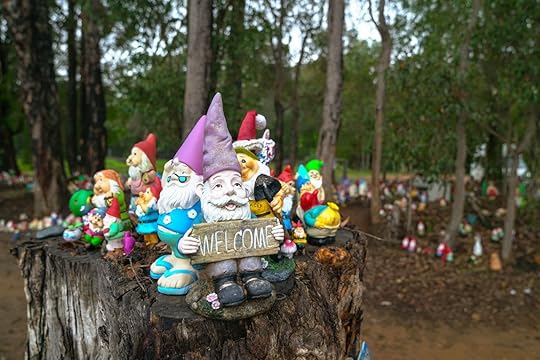
For an inanimate bunch, garden gnomes have a tendency to travel. Entire colonies have cropped up in the wild, far from the front lawns they were made to decorate, appearing everywhere from the Australian outback to the woodlands of the Pacific Northwest. Liberation fronts, the most notorious of which operates in France, are behind some of their releases, yet others seem to relocate all on their own. However they’re getting around, an entire world of garden gnomes now exists below our treetops. Here’s where to spot a colony out in the wild.
1. Gnomesville, Ferguson Valley, Western Australia

Photo: becauz gao/Shutterstock
In a small pocket of the Western Australian bush south of Perth, garden gnomes outnumber people. An estimated 7,000 gnomes inhabit Ferguson Valley near the town of Wellington Mill, whose own population hovers around 200. No one remembers how Gnomesville began, but tourists keep the collection going, coming from around Australia and the world to leave figurines of their own. All gnomes are welcome: Visitors to Gnomesville will see sporty gnomes mingling with artsy gnomes, gnomes engaged in leisure activities, novelty gnomes dressed like Santa or one of Snow White’s dwarves, and even a time-out corner for naughty gnomes.
2. Gnomes Trail, Maple Valley, Washington
View this post on InstagramA post shared by Logan Castle (@castle878) on Jun 23, 2020 at 1:27pm PDT
Garden gnomes are not the woodland creatures one expects to see on a nature walk. For some hikers in Maple Valley about 30 miles southeast of Seattle, however, this unusual fauna is the draw. Gnomes are hidden all along the Gnomes Trail in Henry’s Ridge Open Space. Many are hidden in plain sight, welcoming walkers from tree stumps and hollows. Altogether the trail is a gentle two miles out and back, perfect for exercising young legs and imaginations.
3. Gnome Road, Red Feather Lakes, Colorado
View this post on InstagramA post shared by L A U R A • E L L E N (@herbababe_24) on Sep 3, 2018 at 1:40pm PDT
Deep in the forest of Red Feather Lakes, near the Colorado-Wyoming border, lives a community of gnomes and other tchotchkes. Signs reading Gnome Road and Elf Lane mark the colony’s location, where visitors are welcome so long as they’re respectful. “Do not take us, break us, or relocate us,” reads the Elf Lane sign, which also names these gnomes the keepers of the forest.
4. The Gnome Reserve, West Putford, England
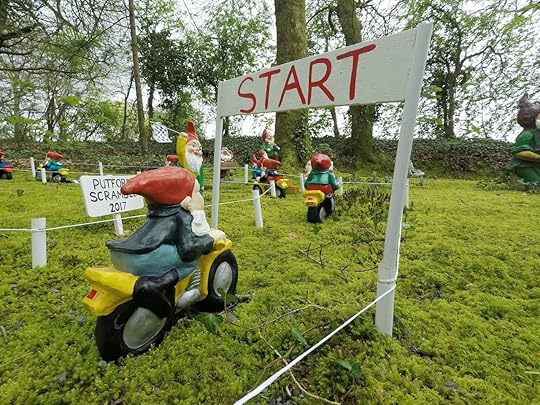
Photo: dcurzon/Shutterstock
In 1979, Ann Atkin was inspired to start a gnome sanctuary in West Putford, England. Now a tourist attraction, the site covers four impressive acres, making it the largest colony in the world according to the Guinness Book of World Records. Most of the gnomes here are hard at play, whether engaged in a game of chess or busy mooning passersby. Anyone can pay them a visit between March and October when the Gnome Reserve is open to the public, and they can also check out the resident wildflowers.
5. Gnome Homes, Bonney Lake, Washington
Gnome-spotting is best left to the true believers in Bonney Lake, Washington. While gnome sightings are all but unheard of, geocachers have been known to visit in search of the gnome homes found throughout the small city. Inspiration for the 10 small doors that now decorate Bonney Lake’s parks and trails came from San Francisco’s Golden Gate Park, where a miniature door installed in a tree hollow became a local landmark. A tip for gnome-home hunters: Don’t miss the bonus tiny door at the Bonney Lake Library.
6. Gnome Holm, Red Rock, Australia
View this post on InstagramA post shared by James Meeker (@globallyjames) on Sep 19, 2019 at 9:55am PDT
Yuraygir National Park sits midway between Sydney and Brisbane on Australia’s east coast. There, at the base of a eucalyptus tree leading into the park, visitors will find a collection of not only gnomes but also fairies, bears, birds, dinosaurs, mushrooms, and other miscellaneous figurines. Gnome Holm has been growing for years, with new residents mysteriously moving in and punny signs like “Gnome Sweet Gnome” being erected when no one’s watching.
7. Gnome Village, Overland Park, Kansas
Overland Park’s Firefly Forest created quite the buzz in 2013 when resident Robyn Frampton began installing miniature doors along the Tomahawk Creek Trail. Behind each one was a domestic scene scaled down to gnome size: tiny bedrooms with tiny beds, tiny tables set with tiny cookware, tiny fireplaces outfitted with flameless candles. This unofficial city project was immortalized in an award-winning 2015 short film called The Gnomist. Though many of the gnome homes have been removed, locals still leave figurines in the forest, and a similar installation has been added to the Overland Park Arboretum and Botanical Gardens. 
More like thisArt + Architecture7 majestic statues that honor sacred, mythical, and endangered animals
The post 7 merry, magical spots to see garden gnomes in the wild appeared first on Matador Network.

Matador Network's Blog
- Matador Network's profile
- 6 followers



